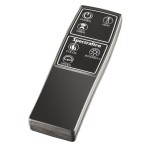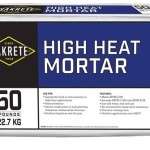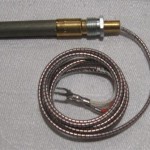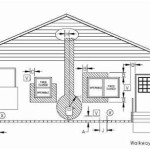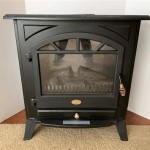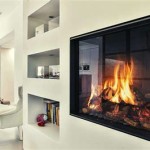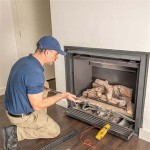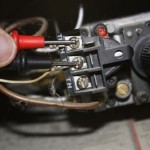LP Gas Fireplace Direct Vent: A Comprehensive Guide
The LP gas direct vent fireplace stands as a popular heating solution, blending aesthetic appeal with practical functionality. These fireplaces offer a cost-effective and convenient way to add warmth and ambiance to a home without the complexities associated with traditional wood-burning units. Understanding the intricacies of LP gas direct vent fireplaces is crucial for homeowners considering installation, maintenance, or troubleshooting these systems.
This article provides a detailed exploration of LP gas direct vent fireplaces, encompassing their operational principles, advantages, installation considerations, safety aspects, and essential maintenance practices. The intention is to offer a complete resource for anyone seeking to deepen their understanding of these heating appliances, thereby facilitating informed decision-making regarding their use and care.
Operational Principles of LP Gas Direct Vent Fireplaces
Direct vent technology differentiates these fireplaces from other types of gas-fueled and wood-burning systems. The defining characteristic lies in their sealed combustion system. This sealed system means that the fireplace draws all the air needed for combustion from the outside and exhausts all the combustion byproducts directly outside as well, using a coaxial or co-linear vent system. This eliminates the need to use indoor air for combustion, preventing depletion of oxygen and reducing the risk of indoor air quality issues.
The ventilation system typically comprises two concentric pipes or two pipes running parallel. The outer pipe brings fresh air from outside into the firebox, while the inner pipe expels the exhaust gases. This configuration ensures that the combustion process is completely isolated from the living space, significantly reducing the risk of carbon monoxide poisoning, a danger associated with improperly vented or unvented gas appliances. Because this system is sealed, there is minimal heat loss up the vent pipe. This results in a more efficient heating system.
LP, or Liquefied Petroleum gas, serves as the fuel for these fireplaces, and requires connection to a propane tank. Unlike natural gas, which is supplied via a municipal pipeline, LP gas is stored in a tank, offering greater flexibility in terms of location, particularly in areas without access to natural gas infrastructure. However, this necessitates regular monitoring of the tank level and timely refills to ensure uninterrupted operation.
The fireplace itself will typically include a set of gas logs that are often made of ceramic fiber or refractory ceramic. These logs are designed to look like real wood logs and are arranged in a way to create a visually appealing flame pattern. Beneath the logs is a burner, which is connected to the gas supply. When the fireplace is turned on, gas flows through the burner and mixes with air, creating a combustible mixture. An ignition system, either electronic or a pilot light, then ignites the gas, producing flames that rise around the logs.
Many modern LP gas direct vent fireplaces are equipped with features such as thermostats, remote controls, and variable flame height settings. These features provide enhanced control over the fireplace's operation, allowing users to adjust the heat output and flame appearance to suit their preferences. Electronic ignition systems eliminate the need for a continuously burning pilot light, further improving energy efficiency and reducing gas consumption when the fireplace is not in use.
Advantages of LP Gas Direct Vent Fireplaces
The popularity of LP gas direct vent fireplaces stems from their numerous advantages over traditional wood-burning fireplaces and other heating alternatives. These advantages encompass efficiency, safety, convenience, and environmental considerations.
Efficiency is a prime benefit. Direct vent fireplaces are significantly more efficient than wood-burning fireplaces. Because they are sealed and draw air from the outside, they do not lose heat up the chimney. This efficiency translates directly into lower heating costs and reduced energy consumption, making them a more sustainable heating option.
Safety is paramount. The sealed combustion system of direct vent fireplaces minimizes the risk of carbon monoxide leaks into the home. Furthermore, the absence of sparks, embers, and the need to handle firewood reduces the risk of fire hazards and associated injuries. The fireplace is also designed with safety shut-off features that will automatically turn off the gas supply if a problem is detected, such as a pilot light outage or a gas leak.
Convenience is another compelling advantage. LP gas direct vent fireplaces require minimal maintenance compared to wood-burning fireplaces. There is no need to chop, stack, and store firewood, nor is there the chore of cleaning up ashes and soot. With the push of a button or the flick of a switch, the fireplace can be turned on and off, providing instant heat and ambiance. The ability to control the flame height and heat output adds further convenience.
Environmental benefits also contribute to the appeal of these fireplaces. They burn cleaner than wood-burning fireplaces, producing significantly less particulate matter and greenhouse gas emissions. This contributes to improved air quality, both indoors and outdoors. The use of LP gas, a relatively clean-burning fossil fuel, further reduces the environmental impact compared to burning wood or other fuels.
Versatility in installation also plays a role. Direct vent fireplaces can be installed in a wider variety of locations than traditional fireplaces. Due to the flexible venting options, they do not require a traditional chimney and can be vented horizontally through an exterior wall. This makes them suitable for homes without existing fireplaces or chimneys, as well as for renovations and additions where a conventional fireplace would be impractical to install.
Installation Considerations and Safety Aspects
Proper installation and adherence to safety guidelines are crucial for the safe and efficient operation of an LP gas direct vent fireplace. Improper installation can lead to a variety of problems, including gas leaks, carbon monoxide poisoning, and fire hazards. Therefore, installation should always be performed by a qualified and licensed technician who is familiar with local building codes and regulations.
The selection of the appropriate fireplace model is the first step. Factors to consider include the size of the room, the desired heat output, and the aesthetic style of the fireplace. The technician will assess the location and ensure that it meets the requirements for ventilation and gas supply. The installation must comply with all applicable codes and regulations.
Venting is a critical component of the installation process. The venting system must be properly installed and sealed to prevent leaks of exhaust gases into the home. The vent pipes must be the correct type and size for the fireplace model and must be installed according to the manufacturer's instructions. The termination point of the vent, whether through a wall or roof, must be located in a safe area, away from windows, doors, and air intakes to prevent the re-entry of exhaust fumes into the building.
Gas line connections are essential. The gas line must be properly sized and connected to the fireplace to ensure a safe and reliable gas supply. The connections must be leak-tested to prevent gas leaks. A qualified technician will also ensure that the gas pressure is within the specified range for the fireplace model.
Safety checks are vital. After installation, the technician will perform a thorough inspection to ensure that all components are properly installed and functioning correctly. This includes checking for gas leaks, verifying the operation of the ignition system, and testing the safety shut-off features. The technician should also provide the homeowner with instructions on how to operate the fireplace safely and how to recognize potential problems.
Carbon monoxide detectors should be installed in the home, particularly near sleeping areas, to provide an early warning of carbon monoxide leaks. It is essential to test the detectors regularly and replace them according to the manufacturer's instructions.
Essential Maintenance Practices for LP Gas Direct Vent Fireplaces
Regular maintenance is essential for ensuring the continued safe and efficient operation of an LP gas direct vent fireplace. Neglecting maintenance can lead to a variety of problems, including reduced efficiency, increased risk of malfunctions, and potential safety hazards.
Annual inspections by a qualified technician are recommended. These inspections should include a thorough examination of the fireplace and venting system. The technician will check for leaks, corrosion, and other signs of damage. The burner and ignition system will be cleaned and adjusted as needed. The venting system will be inspected to ensure that it is clear of obstructions and properly sealed.
Regular cleaning is also important. The glass front of the fireplace should be cleaned periodically to remove soot and other deposits that can reduce visibility. The area around the fireplace should be kept clean and free of combustible materials. The logs should be inspected for damage and replaced if necessary.
Pilot light maintenance is needed for models not equipped with electronic ignition. If the pilot light goes out, it should be relit according to the manufacturer's instructions. If the pilot light continues to go out, it may indicate a problem with the gas supply or the pilot light assembly, and a qualified technician should be called.
Vent system cleaning is a must. The venting system should be inspected and cleaned periodically to remove any debris or obstructions that could impede the flow of exhaust gases. This is particularly important if the fireplace is used frequently or if there are trees or other obstructions near the vent termination point.
Routine checks by the homeowner are advised. The homeowner should regularly check the fireplace for any signs of problems, such as unusual noises, odors, or flickering flames. Any problems should be reported to a qualified technician immediately.

Zcv39lphe Marquis Bentley 39 Direct Vent Ipi Lp Gas Fireplace Heater Big George S Home Appliance Mart

Slayton 60 Direct Vent Linear Gas Fireplace Kozy Heat

Napoleon Ascent Dx42 Direct Vent Gas Burning Fireplace

Gx36ptr 1 Napoleon Fireplaces Ascent X 36 Direct Vent Lp Gas Millivolt Fireplace Big George S Home Appliance Mart

Direct Vent Gas Fireplace Insert With Intellifire Touch Ignition Syste Wood Majestic

Empire Tahoe Premium 32 Clean Face Direct Vent Gas Fireplace

Napoleon Elevation Series 36 Gas Fireplace Direct Vent Millivolt I Fireplaces Usa

Direct Vent Gas Stoves In Dc

Pros And Cons Of Direct Vent Gas Fireplaces Tarantin Industries

Oxford Direct Vent Gas Stove The Place
Related Posts

